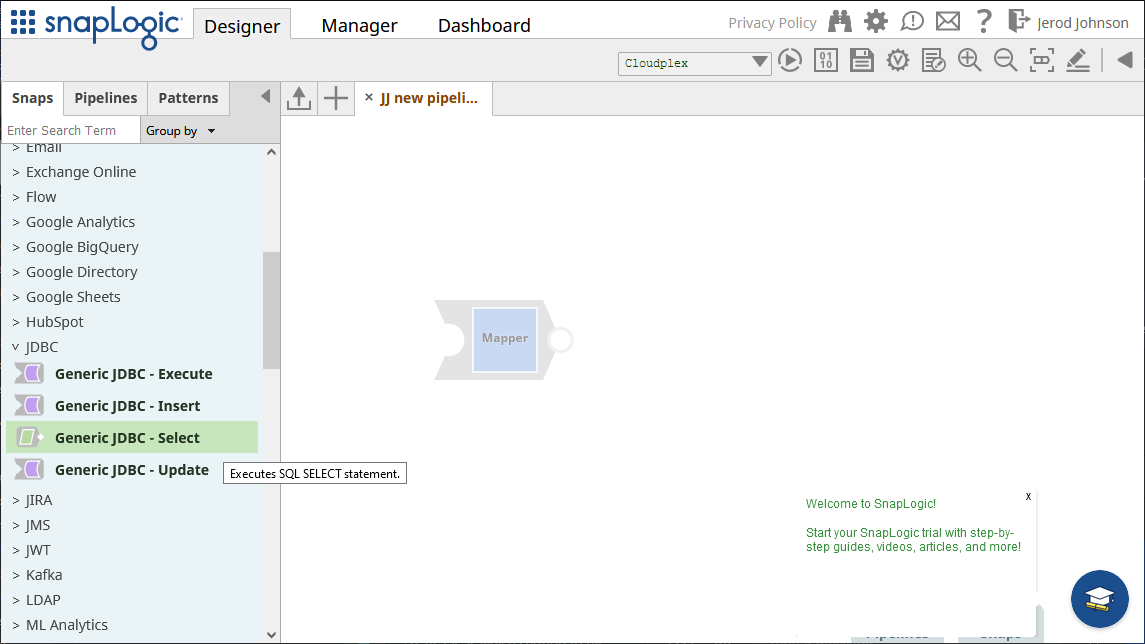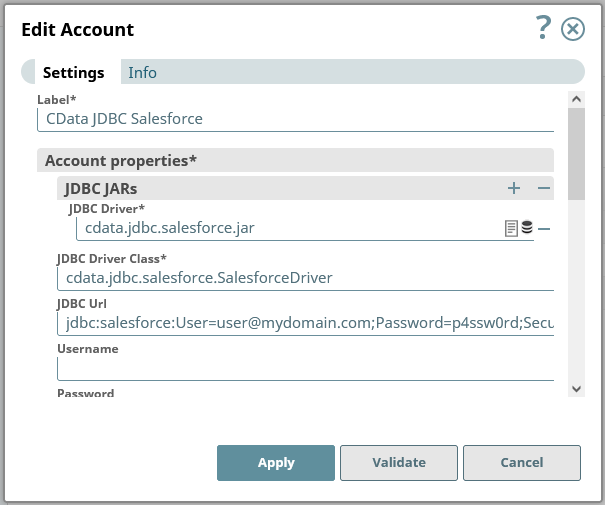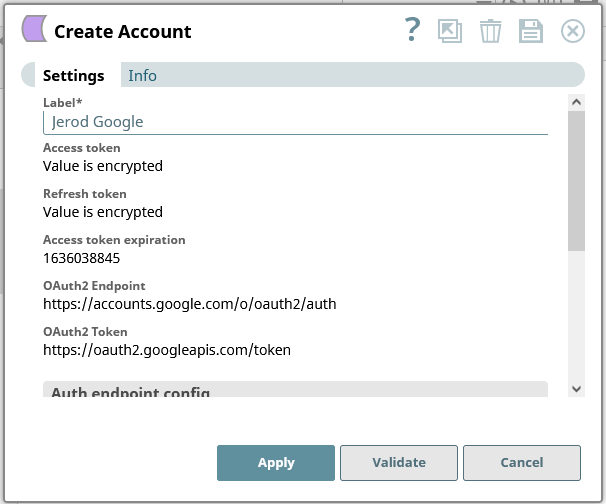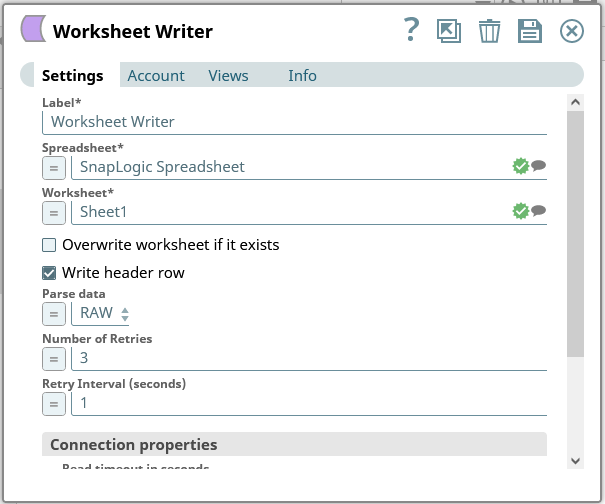Discover how a bimodal integration strategy can address the major data management challenges facing your organization today.
Get the Report →Integrate Azure Data Lake Storage with External Services using SnapLogic
Use CData JDBC drivers in SnapLogic to integrate Azure Data Lake Storage with External Services.
SnapLogic is an integration platform-as-a-service (iPaaS) that allows users to create data integration flows with no code. When paired with the CData JDBC Drivers, users get access to live data from more than 250+ SaaS, Big Data and NoSQL sources, including Azure Data Lake Storage, in their SnapLogic workflows.
With built-in optimized data processing, the CData JDBC Driver offers unmatched performance for interacting with live Azure Data Lake Storage data. When platforms issue complex SQL queries to Azure Data Lake Storage, the driver pushes supported SQL operations, like filters and aggregations, directly to Azure Data Lake Storage and utilizes the embedded SQL engine to process unsupported operations client-side (often SQL functions and JOIN operations). Its built-in dynamic metadata querying lets you work with Azure Data Lake Storage data using native data types.
Connect to Azure Data Lake Storage in SnapLogic
To connect to Azure Data Lake Storage data in SnapLogic, download and install the CData Azure Data Lake Storage JDBC Driver. Follow the installation dialog. When the installation is complete, the JAR file can be found in the installation directory (C:/Program Files/CData/CData JDBC Driver for Azure Data Lake Storage/lib by default).
Upload the Azure Data Lake Storage JDBC Driver
After installation, upload the JDBC JAR file to a location in SnapLogic (for example, projects/Jerod Johnson) from the Manager tab.
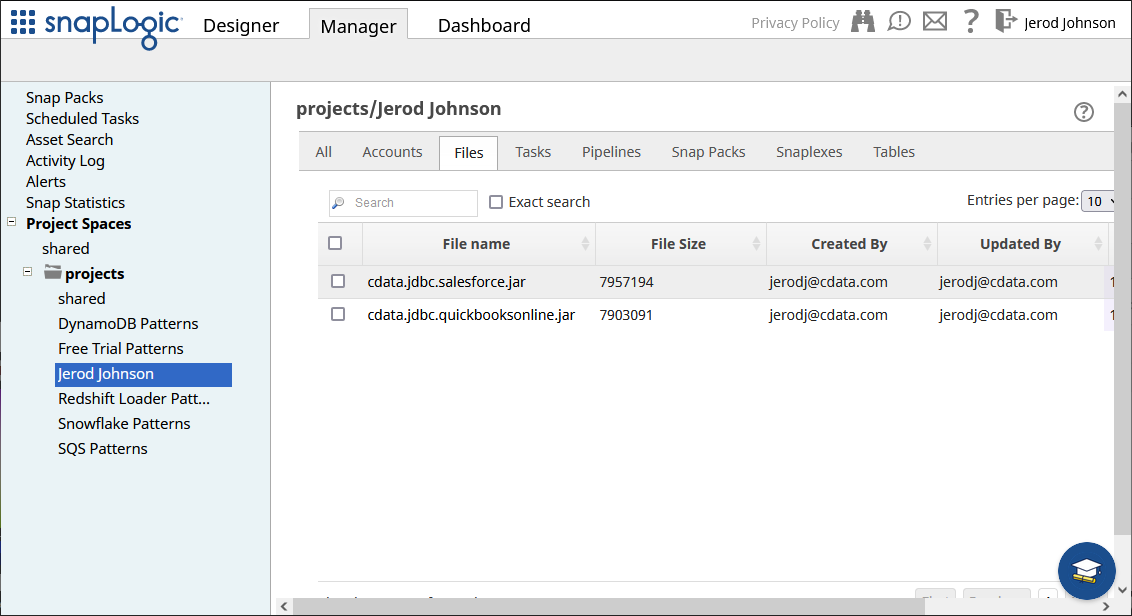
Configure the Connection
Once the JDBC Driver is uploaded, we can create the connection to Azure Data Lake Storage.
- Navigate to the Designer tab
- Expand "JDBC" from Snaps and drag a "Generic JDBC - Select" snap onto the designer
![Adding a Generic JDBC snap onto the designer]()
- Click Add Account (or select an existing one) and click "Continue"
- In the next form, configure the JDBC connection properties:
- Under JDBC JARs, add the JAR file we previously uploaded
- Set JDBC Driver Class to cdata.jdbc.adls.ADLSDriver
Set JDBC URL to a JDBC connection string for the Azure Data Lake Storage JDBC Driver, for example:
jdbc:adls:Schema=ADLSGen2;Account=myAccount;FileSystem=myFileSystem;AccessKey=myAccessKey;RTK=XXXXXX;InitiateOAuth=GETANDREFRESH
NOTE: RTK is a trial or full key. Contact our Support team for more information.
![Configuring a connection (Salesforce is shown)]()
Built-In Connection String Designer
For assistance in constructing the JDBC URL, use the connection string designer built into the Azure Data Lake Storage JDBC Driver. Either double-click the JAR file or execute the jar file from the command-line.
java -jar cdata.jdbc.adls.jar
Fill in the connection properties and copy the connection string to the clipboard.
Authenticating to a Gen 1 DataLakeStore Account
Gen 1 uses OAuth 2.0 in Azure AD for authentication.
For this, an Active Directory web application is required. You can create one as follows:
To authenticate against a Gen 1 DataLakeStore account, the following properties are required:
- Schema: Set this to ADLSGen1.
- Account: Set this to the name of the account.
- OAuthClientId: Set this to the application Id of the app you created.
- OAuthClientSecret: Set this to the key generated for the app you created.
- TenantId: Set this to the tenant Id. See the property for more information on how to acquire this.
- Directory: Set this to the path which will be used to store the replicated file. If not specified, the root directory will be used.
Authenticating to a Gen 2 DataLakeStore Account
To authenticate against a Gen 2 DataLakeStore account, the following properties are required:
- Schema: Set this to ADLSGen2.
- Account: Set this to the name of the account.
- FileSystem: Set this to the file system which will be used for this account.
- AccessKey: Set this to the access key which will be used to authenticate the calls to the API. See the property for more information on how to acquire this.
- Directory: Set this to the path which will be used to store the replicated file. If not specified, the root directory will be used.
![Using the built-in connection string designer to generate a JDBC URL (Salesforce is shown.)]()
- After entering the connection properties, click "Validate" and "Apply"
Read Azure Data Lake Storage Data
In the form that opens after validating and applying the connection, configure your query.
- Set Schema name to "ADLS"
- Set Table name to a table for Azure Data Lake Storage using the schema name, for example: "ADLS"."Resources" (use the drop-down to see the full list of available tables)
- Add Output fields for each item you wish to work with from the table
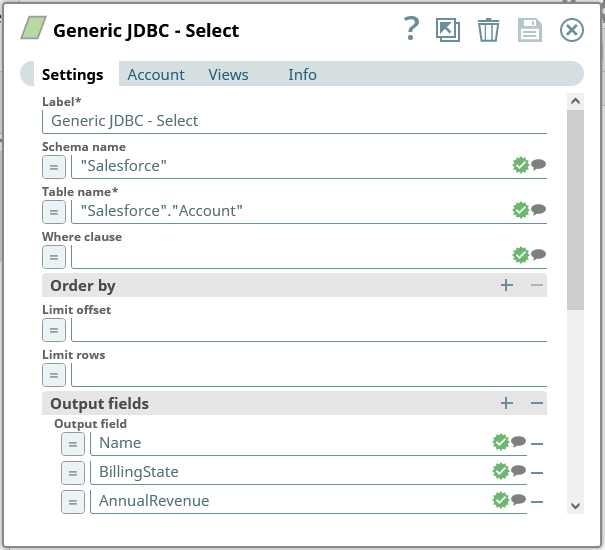
Save the Generic JDBC - Select snap.
With connection and query configured, click the end of the snap to preview the data (highlighted below).
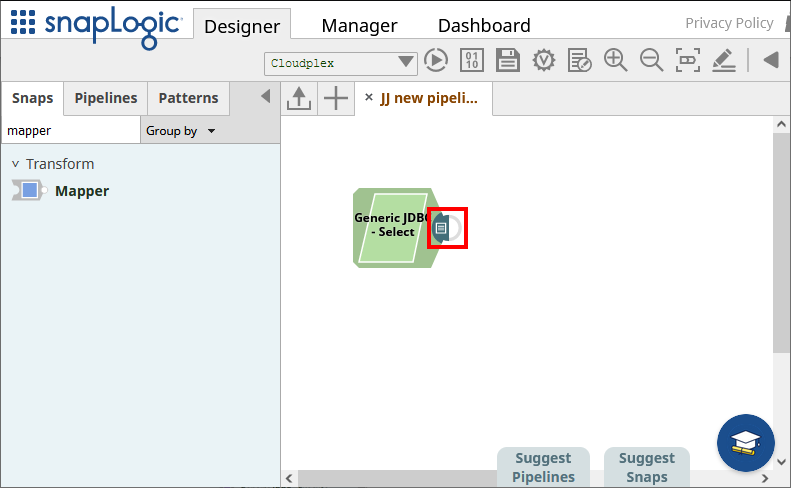
Once you confirm the results are what you expect, you can add additional snaps to funnel your Azure Data Lake Storage data to another endpoint.
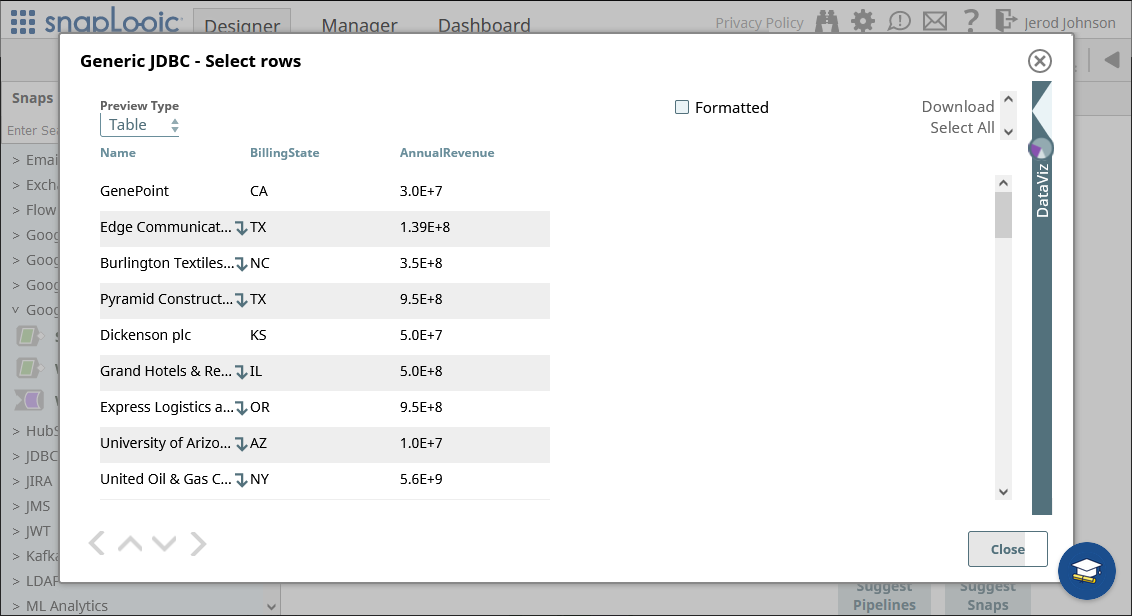
Piping Azure Data Lake Storage Data to External Services
For this article, we will load data in a Google Spreadsheet. You can use any of the supported snaps, or even use a Generic JDBC snap with another CData JDBC Driver, to move data into an external service.
- Start by dropping a "Worksheet Writer" snap onto the end of the "Generic JDBC - Select" snap.
- Add an account to connect to Google Sheets
![Connecting to Google]()
- Configure the Worksheet Writer snap to write your Azure Data Lake Storage data to a Google Spreadsheet
![Writing to a Google Spreadsheet]()
You can now execute the fully configured pipeline to extract data from Azure Data Lake Storage and push it into a Google Spreadsheet.
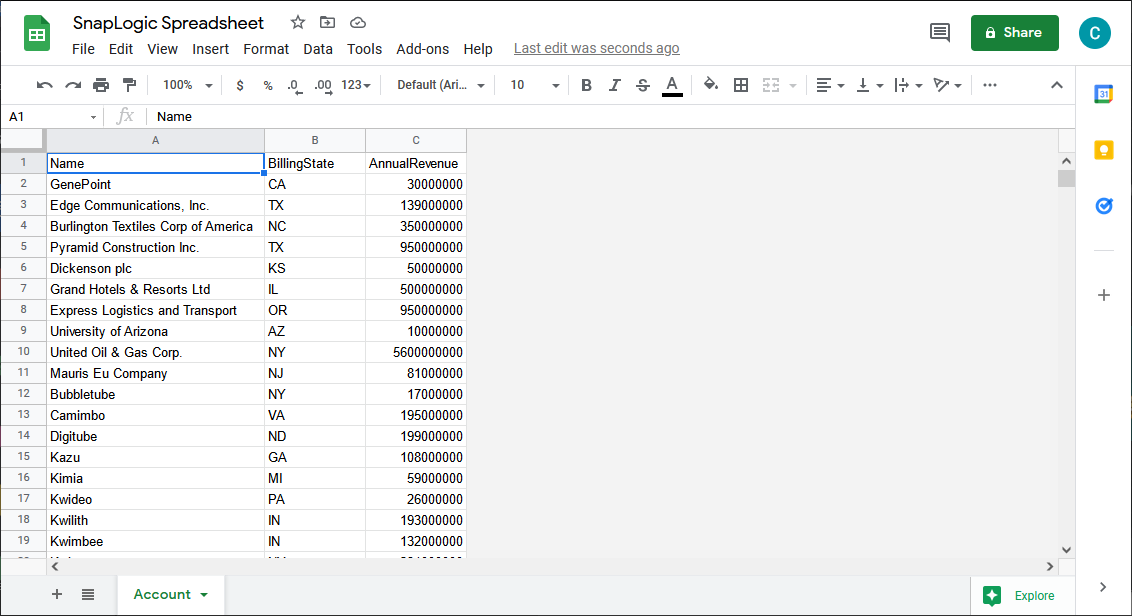
More Information & Free Trial
Using the CData JDBC Driver for Azure Data Lake Storage you can create a pipeline in SnapLogic for integrating Azure Data Lake Storage data with external services. For more information about connecting to Azure Data Lake Storage, check at our CData JDBC Driver for Azure Data Lake Storage page. Download a free, 30 day trial of the CData JDBC Driver for Azure Data Lake Storage and get started today.






